#One-dimensional stereotypical queer-coded villains
Explore tagged Tumblr posts
Text
STORIES TELLING: NED LOWE AND THE DEATH OF POOR REPRESENTATION IN OUR FLAG MEANS DEATH
In history, Ned Lowe was one of the most sadistic and violent pirates in the early 18th century, so he’s an obvious choice for a villain for season 2, episode 6 – Calypso’s Birthday. What is interesting is what the OFMD writers chose to do with him.
Lowe announces himself to the crew of the Revenge with great fanfare (cannon ball attack) and gets right to the point.

Ed is thoroughly unimpressed.
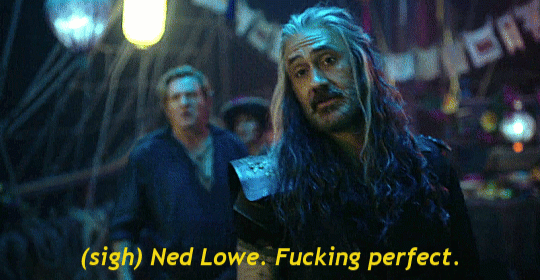
Cut to Ed and Stede tied up while Ned attempts to set the mood so he can monologue about why he wants to kill Ed.



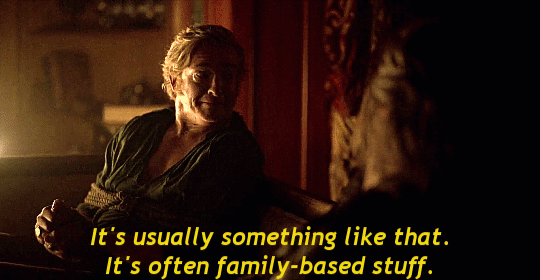
Ed knows what’s coming. He is going to suffer but he still can’t be arsed to meet Ned with anything but vaguely bored dismissiveness (and Stede is happy to play along).
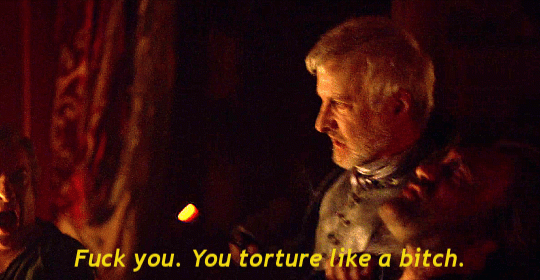
Up on the deck, Ned prepares the crew for his big, dramatic moment of symphonic torture.
Note that the Revenge crew is tied down, braced by vices and generally unable to protect themselves from imminent torture and possible death, but their spirits are up. They don’t seem terribly fussed.
Then Stede uses his people positive management style to happily orchestrate a worker uprising in Ned’s crew.
Ned’s crew responds instantly; severing their allegiance to Lowe and telling him off.
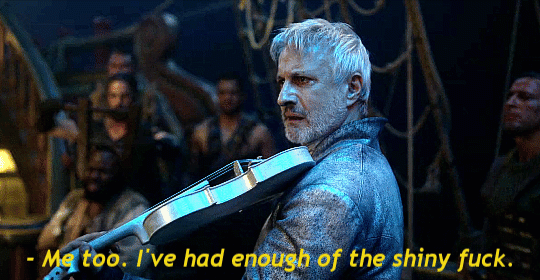
The crew sails away and talks profit sharing while Ned dully threatens to hunt them down.
Ned is now a prisoner of the Revenge crew and seems entirely disinterested in his own survival.


And Ned sinks to the depths, without struggling at all.
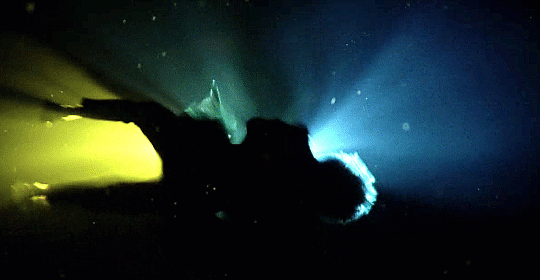
There is a lot going on in this episode: pay and labor equity direct action, gay love engagement bliss, kink humor, Stede being a hero and saving his crew by playing to his strengths, then having to decide whether to kill in cold blood and feel the consequences of that choice. Ed having one more reason to be done with piracy (while being so impressed with and fond of Stede), and then watching his man make a fraught choice and having to deal with the fallout from that. (And, damn, I haven’t even mentioned the passionate sex bit.) Anyway, back to the point.
Now for the the meta part
The Ned Lowe sequences are perfectly in keeping with OFMD’s signature blend of madcap violence, humor, and big emotional gut punches. But something about Ned Lowe just strikes me as off for this show.
Ned is seriously threatening the crews’ lives, so why don’t they take him seriously?
Why does Ned have such a boring, throwaway backstory?
Why is Ned so nonchalant about his own death; like it’s a foregone conclusion?
Why does Ned have a silver violin and silver spurs on his slip-on dress shoes?
Why is Ned sartorially monochromatic?
And then I realized who Ned reminds me of.
This guy,
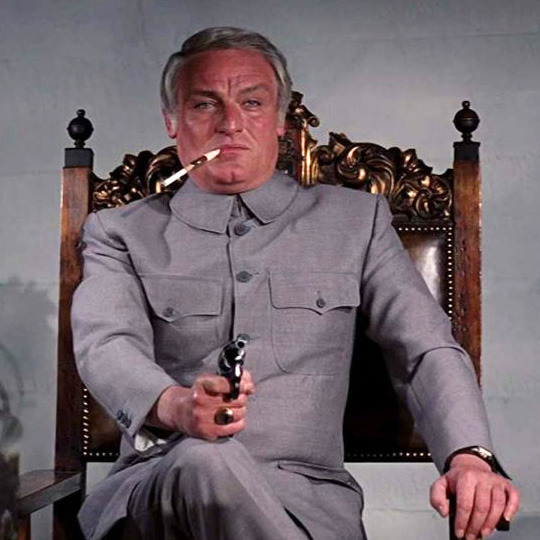
Earnst Stavro Blofeld in the James Bond film Diamonds are Forever (1971)
And this guy,
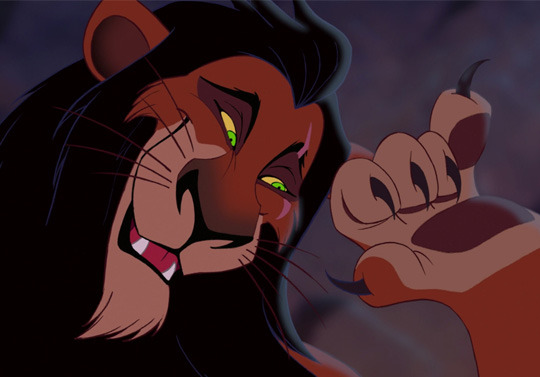
Scar in Disney's The Lion King (1994).
And this guy,
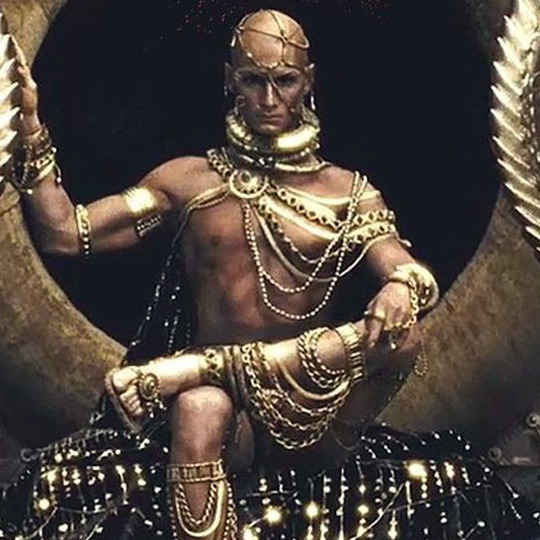
Xerxes, 300 (2006).
And it sure seems like Ned Lowe isn’t just an episodic villain. He is an archetype of the one-dimensional, stereotypical queer-coded villain that has been endemic in film and television throughout history. The OFMD writers have a lot to say about what to do with this kind of character:
Don’t respect him.
Feel free to openly mock him.
Don’t let him take your joy, even though he will hurt you.
He won’t disappear on his own. You have to throw something at him (take action) to make him go away.
Once he’s in the water, he’s content to drown. He’s not into what he’s doing any more than you are.
Oh and, just to be clear,

The LGBTQIA+ community has a very long history of turning shit media into better stories. So, hey, big media, prepare to have your crap characters wrecked (improved).
Now, back to our transformative pirate show with rich, complex queer characters and a multi-layered plot that surprises me every week and makes me feel big feelings - most of all, joy.
Final thought: I do wonder if Ned Lowe is monochromatically silver as a tribute to/poke at, Hollywood and the silver screen.
This meta was written before OFMD season 2 has fully aired. No idea what’s going to happen in the finale (and I’ve generally fled social media to avoid spoilers). I’ll be back, looking at everyone’s fascinating posts after episode 8 airs.
#JFC the OFMD writers have game#OFMD writers do not like stereotypes and know what to do about it#One-dimensional stereotypical queer-coded villains#OFMD meta#Ned Lowe#Thank you David Jenkins#Thank you Alyssa Lane#Thank you Alex Sherman#Thank you Eliza Jimenez Cossio#Thank you Zarye Ferrer#Thank you William Meney#Thank you John Mahone#Thank you Jess Tom#Thank You Natalie Torres#Thank you Simone Nathan#Thank you Adam Stein#Thank you Yvonne Zima#Thank you pocket friends for being awesome and keeping me curious and inspired#Our flag means death#OFMD S2 E6#Calypso’s Birthday#OFMD S2 spoilers#OFMD S2 E6 spoilers
730 notes
·
View notes
Text
Queer-coding, let’s talk about it. (Also since this is a rant, any inaccuracies, please let me know, this is all just to verbalize thoughts of mine)
There used to be this concept where gay people could not be in media unless they were “unhappy” by the end of it, so that led to a lot of villains having characteristics typical of gay people (also I’m going to be using the term gay as an umbrella term so just bear with me with that). Ursula from the Little Mermaid because inspired by a drag queen, Scar from Lion King because dramatic and flamboyant which is similar to how gay men are portrayed, Hades from Hercules is also dramatic and flamboyant. This not only makes fun of gay people and reinforce stereotypes about them as well as making them seem one dimensional, but it also teaches kids at a young age that these traits are characteristic of bad guys since these movies are aimed towards a child audience.
I have no proof of this but I feel like this could lead to internalized homophobia. Like if a kid starts to think they’re gay or if they relate to the traits of the villains, they’ll start to feel as though they are bad or villainous. I just feel this isn’t an issue many people talk about. Yea a lot of queer people talk about queer coding, but outside the community, very few people know anything about it. I even was talking about it to a gay friend of mine and he had never heard of queer coding. I just want people talking about this and working to change this.
1 note
·
View note
Text
WisCon 42 panel Black Lightning
Black Lightning panel description:
The CW, host of DCTV shows Arrow, Flash, Supergirl, and Legends of Tomorrow, is now the network to go to for the television adaptation of the classic comic Black Lightning! The show focuses on a black family—the father, a retired superhero and current high school principal, dons his supersuit once more to protect his daughters. It seems at least one of the daughters are developing powers of theirs own. One of the daughters is a lesbian, adding more intersecting identities that are rarely see on TV. This show seems to be a smart, funny, political, action-packed family drama - with super powers. Let's celebrate, discuss, and critique this exciting new show!
Moderator Inda Lauryn with panelists Jennifer Cross, JP Fairfield, Alex Jennings, and Krys.
Reminder that these panel notes are only my own recollections and the things I managed to write down - my notes are incomplete and likely faulty in places. Corrections and additions are always welcome. Especially please do correct me if I get names or pronouns wrong!
Also I name panelists as that’s publicly available information but not audience members unless requested by that person to have their named added.
[Ugh this was my first panel of the morning and my handwriting is extra-bad. I’ll be skipping chunks in which I can’t make out what I meant to write!]
Inda started the panelist intros off with the question of what DC comic character they’d like to see on TV.
JP answered with Nubia, Wonder Woman’s sister. Krys said Static. Jennifer replied with Monica Rambeau. Alex said Static might in fact end up on Black Lightning but gave his answer as Hal Jordan’s Green Lantern, but if Hal was black. Inda answered saying she’d like a proper Vixen live action show.
Alex talked about how Black Lightning is standing up well so far against the comics, which he has been a fan of for awhile. He says BL is the linchpin for the black sector of DC comics. The daughters become part of the Titans for awhile, etc.
One thing Alex does not want to see on the show is Jefferson acting as a villain for an extended period of time as being undercover with the Outsiders.
Jennifer really liked the depiction of Freeland in the show as it’s own character, and showing black life in their own cities.
Alex explained that in the comics, it’s a black neighborhood in Metropolis.
Inda said that technically, right now, BL is separate from the rest of the DCTV universe. Jennifer said there was that line about Black Canary, though. JP said they’ve waffled about it. She wants it to be part of the overall universe (even though Black Lightning is better written than the other shows), to deal with the intersectional issues of all these white vigilantes and how they fit in with police oppression of black neighborhoods.
Jennifer said that Arrow had a storyline about police oppression but they All Live Mattered it. She added - let’s just keep the rich white man away.
JP said BL could teach them how to be superheroes though, since they’re all a bunch of screw-ups. They’d have to pay him though!
Krys said that Supergirl never addresses race.
Alex said the most recent Supergirl episode kind of dealt with it, but Flash never addresses it even though two of the main characters are black.
I asked from the audience - what if only James Olsen got to interact with the BL world (thinking maybe it’d help him to have some actual black people to talk to about these things?), and JP answered - oh they’d have to finally give him something to do?
JP wants Jefferson to “taser punch” Ollie.
Inda asked the panelists what they would change about the show.
JP wants more representation of black families, and not just one kind. She likes that they’re giving them room to grow and that the two daughters have different world views. She doesn’t like some of Jefferson’s respectability politics, however.
Alex agrees and hopes the show will address that. He said the comic origins of BL are frankly hard to read - for example he puts on an afro wig when he dresses as BL.
Jennifer said the reason - not an excuse - that Jefferson has those respectability politics is that he is trying to help the kids in his community learn to code switch so that they can leave if they want to.
Krys talked about the history with Jefferson and his powers and how that explains a lot of his worldview. She doesn’t like it, but she understands where he’s coming from.
JP added - but he low-key looks down on his own community.
Jennifer said that was addressed somewhat when Khalil comes back. She doesn’t like Khalil, but appreciated that he said what he did to Jefferson.
There was an audience question about queerness - I didn’t get down the exact question.
Inda said they were going there - she was going to talk about the women on the show next, so let’s start with Anissa.
JP said all the women have different goals and needs in their life and they can disagree with each other and still support one another. Also with Anissa - her family is okay with her and her being gay is a non-issue for them, which is nice.
Jennifer said she likes to think it was intentional that it’s not addressed within the show - the family’s reaction to Anissa coming out could have been different, but the show starting with them accepting her destroys the stereotype about black people being inherently homophobic. She also likes that Anissa is openly gay, but that’s not the focus of who she is as a character.
Krys likes how involved Anissa is in the community and how that’s an important part of her character.
Inda wanted more of Grace once we met her, but is hoping there will be more of her in the next season.
JP liked that the minute Khalil got creepy, Jennifer got away from him. It didn’t turn into one of those “oh but I love him!” stories.
Inda said she did teenager well because she wanted to smack her around a bit.
Jennifer’s issue with Grace was that because she’s not black, there is a component of black queer love missing on her TV. Anissa leaving a black woman for Grace hurt a little bit because of the issue of black women being seen as the least desirable.
Inda said she loved Lady Eve as a villain and hated the way she died, but at least she kept a sense of being human through to the end. JP said they should have kept her as the Big Bad for the whole season. Alex said - she’ll get better. (lol - this then became a repeated a line about any character that had died)
Jennifer talked about Tobias as being the literal embodiment of internalized anti-blackness. She loves a good villain who gets his own hands dirty, and loved that they chose an actor with albinism.
Inda liked Tobias and that they gave him a good villain backstory. One of the best villains on DCTV.
Alex said he likes that Tobias is played by a pretty decent rapper. He likes the proper gravitas that he brings to the role, as well. He does wish that instead of intimidating his underlings, he’d have explained his worldview about how the world needs them - especially with respectability politics on the other side of things. He also loved the tattooed guy.
Inda brought up the music on the show. JP loved the music. Krys loved the mix of older songs and newer ones to match specific scenes, themes, and events.
Jennifer liked the aspect of multi-generational music and how it captured the themes. She gave a lot of examples that I was apparently too tired to write down beyond “lots of examples” - sorry about that. She also talked about how she wants the show to use it’s platform to feature more new artists like it did in the pilot.
Inda liked when the show used music humorously. An audience member brought up the scene with Stairway to Heaven and how weird and confusing it was - lots of laughing about it.
JP still wanted Lady Eve as the main villain and wanted to see her fight Tobias.
Jennifer said to get rid of Syonide - she serves no purpose. “Why are you here? Are you our Becky translator?”
JP liked that there were two dimensional white characters - it was the opposite of mainly white shows having two dimensional black characters and felt appropriate.
Alex said some of the minor villains are “wack” - Khalil as painkiller for example. He hated him in the comics and his name makes no sense. (lol)
There was a whole discussion about black character’s hair and how quickly they change from one style to the other getting into costume and how ridiculous it is. Jennifer did love Anissa’s battle hair, though.
Jennifer also talked about loving the father-daughter relationships. She and Krys both had similar stories as Jennifer’s roller rink fight.
Inda is thankful they already changed Anissa’s super suit. Then said that the show has been renewed for another season, and asked the panelists what they’d like to see next.
JP said Anissa and Jen kicking ass together. Krys said Jennifer getting a suit and training and generally coming into her powers.
Jennifer said she’d like to see how these characters do time management? Anissa, especially, does a lot - how is she doing it all? Jefferson, too. This is an issue she was with superhero universes in general. (uh-huh)
Alex wants to see Jakeem Thunder introduced into the show as it would also introduce the universe to aspects of magic.
Inda would like a little less addressing of police brutality in the future. More hero/villain stuff - but she does like that Freeland is a microcosm.
JP added that police brutality is not usually the focus of black lives - it’s just something that happens while going about their lives.
Krys wants more followup with the kids and the green lightning and Jefferson possibly being a mentor to them.
Jennifer wants more family stuff. Also Tobias showing some remorse - he got over his sister’s death really fast. She also feels they rushed Khalil’s origin story. As someone who is unapologetically Team Killmonger, she wants more complexity in her villains.
JP said the story really missed out on the treatment of Tobias and his relationship with his sister. They established their relationship to the point of her even searching for their father so he could kill him.
Alex interjected with “you don’t think Tobias will bring her back?!” An audience member said they should bring her back to save the actress from the Tyler Perry show she moved on to. Panelists all agree with this assessment.
Someone from the audience asked about the role of the afterlife, as well as the Vice Principal character.
JP discussed how they brought back LaLa, so maybe they will explore that a little more. As far as the VP - she never trusted her. At first she thought she was after his job, then after him, then turns out she’s an agent. There were all of these different angles of trying to get closer to him, but the fact that she doesn’t want to believe Jefferson is BL indicates some of those feelings might have been real.
Jennifer said she doesn’t want to go on a rant about those mismatched wigs but... that character is shady but also conflicted. As “Big Bad Chad” pointed out, she was spending a lot of time with Jefferson. Is she compromised? Yea, she is. Jennifer would prefer the character not come back unless they give her something else to do, however.
As far as the afterlife, Jennifer liked that the show is using subtle notes of black folklore and what people she knows have been raised with. She added “sorry white people, but this show knows it is not for you.”
Alex said the afterlife stuff only makes sense if spirits are real with the tattoo guy. Maybe the guy Tobias paid to bring him back didn’t tell him that part, and that there is magic involved.
Krys noted that the spiritual stuff in the show seemed personalized to each character.
An audience member asked about the sister’s different approaches to their powers.
Inda said that Jennifer just freaked out and didn’t want them, but did use them to save her father’s life. She saw how it could be a good thing, and now she is on a journey of acceptance.
JP added that she’s not all into her powers, but sees the benefits of them - she’s like a battery for her father!
Jennifer talked about Anissa accepting her powers right away because she’s always been about wanting to help her community and so she immediately saw her powers in that light. Jennifer didn’t initially want them - but when it came to her family, she stepped up. She might struggle with having powers, but when she has to use them, she’ll do it.
JP asked Alex if in the comics, it turns out Jennifer is the most powerful in the family. He said yes - and also that they can use their powers together in interesting ways.
An audience member brought up an article about black heroes and that the powers they have tend to be elemental - earth, wind, fire.
Alex said this is true even in other media, such as Captain Planet. It happens a lot, even now. He would like to see more tech-based powers.
Jennifer said but we are on planet earth, and she loved Storm and how she could literally turn the earth against people. She would like to move away from the Magical Negro trope but also likes the idea of having earth-based powers at their disposal.
More talk about issues of hair and fighting. Jennifer said you really don’t want loose hair when fighting. But the hairstyle Anissa chooses is an ode to Ashanti warrior women. It’s not practical, however.
Inda talked about the suspension of disbelief as far as people not being able to recognize them with just masks over their eyes. An audience member said that they explained this at least with BL that it hurts to look directly at him. Inda said that was only in a conversation between the daughters, so it’s possible it has to do with their own powers and isn’t a function of BL’s powers alone.
Jennifer said she would like more investigation into green light and the vaccine and the organization behind it all.
JP said - let’s talk about Gambi and his guilt about being a part of the whole thing.
Jennifer said she is tired of this trope of the the white guy who somehow didn’t know that this covert agency he was a part of was going to do some dirty shit. It’s almost better if he’s just guilty because he knew what he was getting into but wants to do better now. She lost interest in Gambi when Lady Eve died.
JP didn’t want Jefferson to forgive him so easily. Maybe he did it because they had to work together but she wants him to still be mad about what happened.
Inda mentioned the impulse for shows to give us white redemption.
Jennifer added that it might be more of a white-passing issue than white because of his actual last name being Esposito.
Inda liked having a white character in that role because “we don’t question white people in our spaces” so he could have easily moved in those communities doing what he did.
[And that’s all I got. Lovely, lively panel with gobs of info and just lots of fun!]
4 notes
·
View notes
Text
Project 2: LGBTQ+ Representation in Video Games
Note: This essay contains spoilers for Gone Home, Resident Evil: Code Veronica, Resident Evil: Dead Aim, the Life is Strange series, and The Last of Us: Left Behind.
LGBTQ+ representation in video games has historically been few and far between. Characters belonging to the community have often fallen into cliché, one-dimensional, and offensive but mostly damaging tropes. One such trope is the gay antagonist, whose lack of gender conformity is often the punch line of the joke or the reason they are the villain of the story, and another frequently seen trope is the “Bury Your Gays” trope in which LGBTQ+ characters suffer tragic fates and are often dead by the end of the game. As society has grown more accepting and understanding of the LGBTQ+ community, video games too have begun to welcome the community by adding authentic characters and narratives and granting players the freedom to choose their romantic partners in recent games. Both The Moose Test and GLAAD’s Outstanding Video Game Award are two important steps forward toward accurate portrayals and positive representation in video games. With the turbulence and division in today’s society, positive and authentic representation in video games is a key tool in building bridges to a path of understanding and communication.
LGBTQ+ characters were frequently casted as antagonists with their gender-nonconformity as a reason worthy of evil. This is exemplified by two games belonging to the Resident Evil series, one being Code Veronica and the other being Dead Aim. In the first, the main antagonist, Alfred Ashford, is revealed to cross-dress as his sister to “channel her spirit” and is hinted to have had an incestual relationship with her (Flanagan). In the latter, the main antagonist, Morpheus Duvall, transforms into a female version of himself after taking a virus strain (Flanagan). Both of these depictions show a negative view of trans-ness and differing from cisheterosexuality in general, as Alfred’s cross-dressing is tied to an incestual relationship and sociopathology, and Morpheus’s sex change is shown as the result of a virus strain. Characters that showcase the ridicule of LGBTQ+ characters are Poison from Capcom’s Final Fight and Ash from Sega’s Streets of Rage 3. Final Fight is a melee fighting game, and Capcom was concerned that players would feel guilty fighting a woman and thus made Poison transgender, displaying the disparaging mentality that transgender women are not women and that transgender people are more acceptable people to attack. Ash from Sega’s Streets of Rage 3, another melee fighting game, fits an extremely flamboyant stereotype of a gay man. He wears a purple leather outfit, fights with a team of go-go boys, and stands in a ridiculous pose that is not traditionally masculine (or even a proper fighting stance) and thus differs largely from other male characters. If this portrayal weren’t offensive enough, Sega decided to pull Ash from the North American release to “protect the innocence of American audiences” (Flanagan).
The “Bury Your Gays” trope is a trope pervasive in all sorts of narratives, ranging from books to shows to movies and games. Two important mainstream titles that fall into this category are Dontnod’s Life is Strange along with its prequel Deck Nine’s Life is Strange: Before the Storm and Naughty Dog’s The Last of Us, its downloadable content The Last of Us: Left Behind in particular. In Life is Strange, players play as Max, a high school girl who is reunited with her former best friend Chloe, and uncover the dark secrets of Arcadia Bay. In this game, there are many allusions and hints that the two friends harbor romantic feelings for one another but it is never explicitly confirmed. Moreover, Chloe is shown to have intense feelings for her other best friend, Rachel Amber, but this too is never confirmed. This is a form of queerbaiting, which uses the promise of LGBTQ+ representation to pull in players only to fall short and betray their trust (Chan). In the prequel, players play as Chloe and are able to explore the intimate relationship between Chloe and Rachel but again, nothing is made canon. Players are able to choose to kiss Chloe or Rachel, depending on the game, but no relationship is ever made official. This, however, is just one problem with the game. In the first installment of the series, players choose the ending of the story by having Max save either the entire town or only Chloe. This puts players in a difficult position as Max loses something significant either way, and the only way for Max to be happy with Chloe is to sacrifice their neighbors, friends, and family. Regarding Chloe and Rachel’s relationship, we discover that Rachel is dead in the first game, which leaves zero chance for a happy ending for the two. Thus, in the prequel, no matter what players do, no matter how romantic their choices are, players cannot change the fact that Rachel dies and that Chloe is left to mourn her loss. There is no true happy ending for these characters. Similarly, in the DLC of The Last of Us, we learn that prior to the main game, Ellie, one of the main characters, was in love with her best female friend Riley, who she lost to the zombie apocalypse. The girls share a kiss, only to be attacked by a zombie soon after. As Ellie alone survives to be a character in the main story, we know that Riley has passed and there is no happy ending for this couple either.
As we see more LGBTQ+ narratives in games, it is important to remain critical of the narratives depicted. By having LGBTQ+ people getting involved in producing video games, tests and awards evaluating LGBTQ+ representation are being created. In 2017, Michael ‘Moose, Musatow, an experience designer at RedPeg Marketing and a gay man, developed a test to evaluate the representation of an LGBTQ+ character in a video game. Similar to the Bechdel test, which evaluates the representation of women in a work of fiction, the Moose test holds a list of criteria necessary for positive and authentic portrayal in video games (Musatow). This is important as simply adding LGBTQ+ characters to a work does not count as proper representation and can easily be detrimental to the community that plays it. Developers must be mindful about the characters they are creating and how powerful the narratives they depict can be to a person whose gender or sexuality differs from the accepted norm. Along this line, GLAAD, an organization that monitors LGBTQ+ representation in media, has introduced an award to its annual media awards show to recognize video games that excel in LGBTQ+ inclusivity (Lanier). This new category will begin in 2019 and highlight games “empower LGBTQ+ with the agency to explore and express themselves safely within a virtual environment” (Lanier).
Despite the increased visibility of LGBTQ+ representation in video games, representation is still not perfect. Issues, such as antagonizing LGBTQ+ characters, queerbaiting, “Bury Your Gays” tropes, after-the-fact identifying, and playersexual characters, still exist but it is improving. It is important to be critical of the portrayals that exist while enjoying a work to continue moving toward a path of understanding and acceptance, both in the LGBTQ+ community and in society as a whole. LGBTQ+ people are people with stories that also need to be told to help them find characters with whom they resonate and to whom can admire, to help them accept their own identities, to acquaint people not belonging to the community with the realities of the LGBTQ+ experience, and to normalize being LGBTQ+. People are being killed all around the world for not fitting into the cisheteronormative mold society has built and continues to uphold. Even a country that claims to preserve its citizens’ freedom is beginning to backtrack in the rights given to people who do not fit this mold. Now, more than ever, diversity and inclusion in video game narratives are important tools in building bridges between the separated factions of our societies.
Works Cited
Chan, Khee Hoon. “Why I’m Afraid Video Games Will Continue to ‘Bury its Gays’.” Polygon, 4 Aug. 2017, polygon.com/2017/8/4/16090980/life-is-strange-death-lgbtq-characters. Accessed 28 October 2018.
Greer, Sam. “Queer Representation in Games isn’t Good Enough, but it is Getting Better.” GamesRadar+, 15 May. 2018, gamesradar.com/queer-representation-in-games-isnt-good-enough-but-it-is-getting-better/. Accessed 22 October 2018.
Flanagan, Jack. “The Complete History of LGBT Video Game Characters.” The Daily Dot, 16 May. 2014, dailydot.com/parsec/gay-characters-video-games-history. Accessed 22 October 2018.
Lanier, Liz. “GLAAD to Recognize Excellence in Video Game LGBTQ Representation.” Variety, 26 Sep. 2018, variety.com/2018/gaming/news/glaad-video-game-lgbt-representation-1202958447. Accessed 22 October 2018.
Musatow, Michael. “The Moose Test for LGBT Representation in Video Games.” Medium, 2 Dec. 2017, medium.com/@SimplyMoose/the-moose-test-for-lgbt-representation-in-video-games-905d7edd872b. Accessed 22 October 2018.
1 note
·
View note
Text
The Annoying, Predictable, and Somewhat Depressing Bingo of the Token Gay and how to write a good LGBTQ character.
Hollywood’s relationship with LGBTQ characters is an infamous one. Whether its harmful stereotypes or every ‘bury your gays’ moment, straight writers have often fallen into these stereotypes. This post contains seven of the most common bad tropes.
1. Bury Your Gays/Dead Lesbian
The most common, and the most painful; the Bury Your Gays trope is when a gay character, usually one of the only featured dies tragically. Sometimes it’s a tragic hit and run, other times a stray bullet. Sometimes the writer goes straight for a brutal murder. This harmful stereotypes hits home the notion that the LGBTQ characters are less important than their straight counterparts.
It’s especially noticeable as these shows’ characters are usually predominantly straight. It also falls into the category of implying that a gay person won’t have a happy ending and hurts the community.
2. The Depraved Gay
Beginning in the 30s the Hays code banned nudity, suggestive dancing, and lustful kissing. The code also band homosexuality onscreen. To get around this, writers used other traits to tip off viewers.
Unfortunately these tropes were often negative and still persist. The deplorable gay is a villain that is either gay or has queer-coded traits. Think about Disney villains- Hades is sassy, Ratigan is flamboyant man and Ursula is based on a drag queen with her exaggerated make up and a vain and sexual personality. These traits- while not necessarily queer exclusive- are common stereotypes of gay men.
The use of these stereotypes forces an otherness onto the villains, separating them from the- presumably cis, straight- audience. It taps into the prejudices of the hays era and associates gay traits with villains. Even in more progressive times we still see this occur. Sometimes the villains aren’t simply ‘queer-coded’ they are shown as clearly gay. Examples being jokes about prison rape or paedophilia. Not only is it joking about a serious issue, it paints the image of gay men as predators. In blockbusters like Skyfall to novels like the ridiculously conservative Victoria, we see the association again and again. Basically, it sucks.
3. The Depraved Bisexual
Like the Depraved Gay, the Bisexual version is often a villain that is more comfortable with things considered ‘taboo’. They are overtly sexual, which is presented as part of their villainous personality as a socio or psychopath. Often, if it is a bisexual man. they are more predatory and if it is a woman, expect her to be hypersexualized for the fanservice. Both kinds are displayed as sexualized, predatory and -plot twist- villainous.
Something more on the nose is the mirror universe alternative protagonist. In this world our hero is the villain and to show off this newfound evil we see their new bisexual tendencies. Think of Star Trek’s Major Kira- in the mirror-verse she is narcissistic, domineering, and flirts with good Kira as much as she flirts and kisses the other women around her. You wonder why only now does the writers choose to portray Kira as Bi? Why hasn’t it been shown before and why do they never ever mention it again?
4. Every time a cis actor plays a trans person
Eddie Redmayne, Elle Fanning, Jeffery Tambor. A harmful occurrence in casting choices is when cisgender actors (who’s gender identify corresponds with their birth sex) are cast as trans characters. Not only does this take away roles from transgender actors it promotes a harsh and sometimes deadly stereotype that trans people are just cisgender people in wigs and cross-dress. Like I’ve said before the continued use of tropes like these have negative effects on the fight for acceptance and equal representation and transphobia-based violence is a major issue influenced by stereotypes. While there is debate in the trans community over whether cis actors should be allowed to take on trans roles, an overall take is that trans narratives need to be represented more and not just in stereotypical performances.
5. GBF (The Gay Best Friend)
The GBF is the instantly recognised side-character that accompanies their straight, female best friend through their trials and tribulations. Armed with sass, camp, and other effeminate qualities, he is there to say ‘gurl’ and provide cheap laughs. Sometimes these characters are well-developed and progress the plot. Other times they are accessories just there to be the gay friend and have little substance. A great example of this being subverted is the film G.B.F where freshly outed teen, Tanner becomes the must have accessory for the three most popular girls. In the end, Tanner speaks at prom and calls out all the girls that tried to use him, for not valuing him as a person. Films like this prove the GBF can be a good character if the writer treats the GBF like a person and makes them 3-dimensional.
6. A Gay person as a joke
I’m not sure if I need to explain why this is one is wrong. It just is.
7. And finally, barely there gays for clout
Every few years a blockbuster comes out and during the press tour the Straight director or one of his brave, brave actors will step out and declare to the journalist from some media website that they have made the ground-breaking decision to make one (1) character Gay! Soon after the press will discuss how great this is for equality and how amazing it will be to see and how it will affect them at the box-office. Then, come the premiere, the world watches with bated breath, for the fabled gay- then they miss it- because they had one little scene. It is frustrating when a blockbuster gets praised for a blink and you’ll miss scene when dozens of films that focus on the LGBTQ characters and invest in same-sex relationships get largely ignored by mainstream media. This is not to say you can’t be happy and talk about the representation in your writing, the issue is when a creator uses it for clout but does not invest in the character or even name them.
Even worse is the Rowling method. You know what I mean. It’s when a writer decides to retcon their series after its finished to get diversity points. They take a character whose romantic life isn’t mentioned and suddenly announce their gayness in the same style they would announce another minor character is a minority; both without ever bothering to show it in any later canon.
LGBTQ representation is something that’s is steadily improving, however certain tropes are yet to take the hint and retire. This list should in no way deter you from writing LGBTQ characters, even those that are butch lesbians or flamboyant men, but help you look critically at the way stereotypes influence us even subconsciously. Good luck with your own writing and Tarah!
0 notes
Text
Week 3 - Research: Character Design - Lesson 1
Today we focused on the aspects of archetypes and stereotypes when it comes to characters within animation. Animated characters have to be identifiable, in other words the character has to have a factor to allow the viewer to understand their motivations. A character appear as one entity, but end up being another, characters are interchangeable, this is the discussion of archetypes and stereotypes.
Characters can be placed into two categories, these being the collective unconscious and the personal unconscious. Each shows the origin of a personality for a character. For example, when discussing the personal unconscious, the character becomes who they are based around their own experiences. Whereas the collective unconscious is deprived from actions and influences from ancestors, patterns and images. For example, father figures or being afraid of the dark.
A common archetype for a story is the wise old man, or mentor. A mentor’s job is to guide the hero on their journey. However, mentors are not always black and white., To explain this further we were shown an image of Dumbledore and a spiral which began light and golden and eventually turned dark and black. This image represents the layers of character, the further you unravel the image, the more you learn.
The images can be found below:


A character can switch from their primary function, this makes the character connect further with the audience as a human being will change their interests all the time as new information is collected. Through changing the role of the character strips away the illusion that the character remains one dimensional, but rather develops them into someone believable to the audience.
The roles for the eight stereotypes can shift as a story develops, allowing them to branch out and give the audience more insight into the character's mindset. The hero is a perfect example, although they do not traditionally change their personality drastically, there is definitely a growth from the beginning of the story. This is known as The Hero’s Journey. The Hero’s Journey consists of a twelve point process explaining the path in which the hero takes throughout the course of a story. These points are:
The call to Adventure - when the hero is faced with a problem, or opportunity.
Assistance - When the hero receives guidance from the mentor.
Departure - When the hero passes the threshold from the safety of their home and adventures into the unknown.
Trials - The hero has to prove himself through slaying a monster or overcoming an obstacle.
Approach - The time in which the hero has to face their worst fear.
Crisis - The hero’s darkest hour, he could meet his death or possibly be reborn.
Treasure - The hero gains a special recognition or power.
Result - Does the enemy bow to the hero after being defeated, or does the hero escape the area after achieving their goal?
Return - The hero returns to the comfort of familiarity.
New Life - The hero has outgrown their previous life through the change they have made throughout the adventure.
Resolution - All the tangled plot lines get straightened out.
Status Quo - Nothing is the same after the hero becomes the hero.
The archetypes of a story can be broken down into eight types.
The first being the Hero. The Hero or the Protagonist is the main focus of the traditional story arc in which they have to have flaws and weaknesses to engage the viewer to believe in the character.
The shadow or the antagonist is what stands between the hero and their goal. The shadow doesn’t necessarily have to be a physical entity, they can also be an internal struggle in which the hero has. The main purpose of the shadow is to give the hero a challenge to overcome.
The Shapeshifter is the character who can’t be trusted, there goals change as the story progresses, they may not even know that they are the Shapeshifter. The Shapeshifter can be a love interest for the hero. However, many shadows can be Shapeshifters.
The Mentor is the teacher for the hero, often represents our better selves. They are often gift givers to the hero.
The Herald may not be necessarily have to be a person, but a force to the hero, the call to adventure. Can often be a bystander in which will alert the hero of the situation, ask for help.
Threshold Guardians begin as villains, an obstacle in which the hero has to overcome to progress. But they can be converted into an ally.
The Trickster refers to the joker of the story, they delight in breaking the rules of convention. They tend to be the comedy sidekick. They control the Hero’s ego and are reviewed as the light relief in dark times. They do not change throughout the story, butt they affect the lives of others.
The Ally follows the Hero around and is their backup for when things turn sour.
Stereotypes can be easy to decipher through certain characteristics. The representation of the villains within animation and live action fall into the process of Queer Coding. Queer Coding is the term used when characters are given traits to indicate to the audience subconsciously that the villains are queer.
Here are some examples:

Norman Bates shows a physical attribute of Queer Coding through his creepy obsession of interpreting his mother. Through dressing as her and acting in the feminine sense, he shows a clear indication of Queer Coding.

Scar shows Queer indications through his posture and pronunciation in which depicts him as a high class Lion. Though this does not relate strongly to Queer Coding, his movements and actions throughout the Lion King are nods to the viewer of Queer Coding.

Shere Khan from The Jungle Book also exhibits traits of Queer Coding, especially with his conversation with Kaa. Through his menace and intimidation, his posture and high class voice states the characteristics associated with Queer Coding.
0 notes